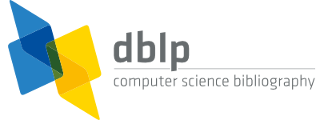


default search action
ACM SIGCSE Bulletin, Volume 25
Volume 25, Number 1, March 1993
- Bruce J. Klein, Cary Laxer, Frank H. Young:

Proceedings of the 24th SIGCSE Technical Symposium on Computer Science Education, SIGCSE 1993, Indianapolis, Indiana, USA, February 18-19, 1993. ACM 1993, ISBN 0-89791-565-8 [contents]
Volume 25, Number 2, June 1993
- Kathy Howell:

The experience of women in undergraduate computer science: what does the research say? 1-8 - Larry Morton, Nicholas Norgaard:

A survey of programming languages in CS programs. 9-11 - Jan Newmarch:

A plan-based approach to Prolog recursion. 12-18 - William A. Coey:

An interactive tutorial system for MC68000 assembly language using HyperCard. 19-23 - Delmar E. Searls:

An integrated hardware simulator. 24-28 - Gordon W. Skelton:

Integrating total quality management with software engineering education. 29-30 - Robert Bryant, Paul De Palma:

A first course in computer science for small four year CS programs. 31-34 - James P. Kelsh:

Levels of abstraction in CS2. 35-37 - Seth D. Bergmann:

Simulating and compiling a hypothetical microprogrammed architecture with projects for computer architecture and compiler design. 38-42 - Tom Nute, Lavon B. Page, Jo Ellen Perry, Richard Rinewalt, Pat Ryan, Laurie White, Stanley A. Wileman:

Results and problems from the 1992 ACM Scholastic Programming Contest Finals. 43-50 - Kailash Chandra:

A set of programming projects for a second programming course. 51-56 - R. Chaudhuri, Andrew C. Dempster:

A note on slowing Quicksort. 57-58 - Jacobo Carrasquel:

Necessity is the mother of language features. 59-64
Volume 25, Number 3, September 1993
- Louise E. Moses:

Our computer science classrooms: are they "friendly" to female students? 3-12 - Atanas Radenski:

A voyage to Oberon. 13-18 - James L. Hein:

A declarative laboratory approach for discrete structures, logic, and computability. 19-25 - Robert M. Harlan, David M. Patrone:

Parsing as search: an easy-to-understand RTN interpreter. 26-30 - Dorothy Deremer:

Improving the learning environment in CS I: experiences with communication strategies. 31-35 - Kirk Pruhs:

The SPIN-OUT puzzle. 36-38 - John S. Gray:

Is eight enough?: the eight queens problem re-examined. 39-44 - Rick Homkes, John Minor Ross:

Clarifying 'C'. 45-51 - Richard C. Detmer:

PC graphics packages for Modula-2. 52-57 - Dorothy Mazaitis:

The object-oriented paradigm in the undergraduate curriculum: a survey of implementations and issues. 58-64
Volume 25, Number 4, December 1993
- Vashti Galpin

 , Ian D. Sanders:
, Ian D. Sanders:
Gender imbalances in computer science at the University of the Witwatersrand. 2-4 - LieJune Shiau:

Object-oriented programming for numerical methods. 5-8 - Martin J. Biernat:

Teaching tools for data structures and algorithms. 9-12 - David T. Brown:

Discrete mathematics II. 13-17 - LieJune Shiau:

Using a heuristic algorithm to help analyze graph problems. 18-20 - Vicki L. Almstrum, Cheng-Chih Wu:

The CSedRes toolbox: a resource to support research in computer science education. 21-26 - Diane M. Miller:

MIS as a discipline: a structured definition. 27-32 - John G. Keating:

Hopfield networks, neural data structures and the nine flies problem: neural network programming projects for undergraduates. 33-37 - Chip Dixon:

Object extensibility: a Turbo Pascal graphics example. 38-40 - T. F. Higginbotham:

The integer square root of N via a binary search. 41-45 - Lorraine Staehr:

Debating: its use in teaching social aspects of computing. 46-49 - William S. Harrison:

Co-oping at the super collider. 50-60 - José de Oliveira Guimarães:

Clever programming languages exercises. 61-64

manage site settings
To protect your privacy, all features that rely on external API calls from your browser are turned off by default. You need to opt-in for them to become active. All settings here will be stored as cookies with your web browser. For more information see our F.A.Q.


 Google
Google Google Scholar
Google Scholar Semantic Scholar
Semantic Scholar Internet Archive Scholar
Internet Archive Scholar CiteSeerX
CiteSeerX ORCID
ORCID














